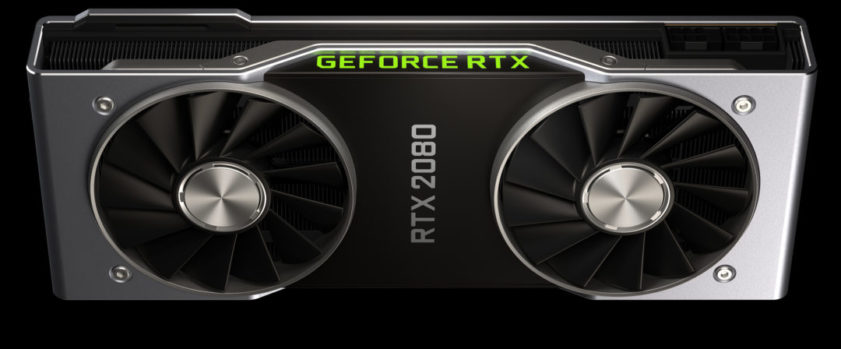Table of Contents
Introduction
NVIDIA is an American tech company based in Santa Clara, California, and is famously known for manufacturing graphics processing units (GPUs) for gaming and other professional industries. This is a huge brand we are talking about and whenever it announces any major product release top tech critics grab their judgment seats and don’t leave it for years. The most remarkable release for the gaming environment is the NVIDIA RTX 2080 GPU which is built up with a new architecture.
The RTX Cards were designed by NVIDIA with latest technologies like real time ray tracing, deep learning super sampling technology (DLSS). The major question that pops into your head right now is, IS IT WORTH THE PRICE? As a true gamer you can’t help but notice all the awesome features it has brought in and the bright future this holds but at the same time you question the heavy price tag attached with it.
What Exactly Are the New RTX Cards?
The brand promises to be 10 times faster, 50 percent better or twice as good when comparing to the previous GeForce GTX series. These new cards- RTX 2060, RTX 2070, RTX 2080, RTX 2080Ti, and RTX Titan offer major improvement in raw power. We traditionally measure this in terms of floating point operations aka, TFLOPS. GTX 1080 has 8.9 TFLOPs performance, whereas RTX 2080 has 10.1 TFLOPs, and therefore RTX 2080 is 1.13 faster than the GTX 1080 in terms of raw computational power, but contains a similar performance to GTX 1080 Ti as its TFLOPs value is 10.6 TFLOPs. With these new card series, a new 12nm CPU architecture called Turing was unveiled to public. A new architecture means higher performance and better energy efficiency, and thereby making games run faster, and reducing the monthly electricity bill respectively.
Turing Architecture
This is the successor of Volta architecture. both are developed by Nvidia. This new architecture has many new shading models included in it, one of them being the mesh shading. The graphics card has great control over the level of details and there is a lot of performance gain with no regression in image quality. It introduces game changing ray tracing feature to general public with RT Cores, and deep learning training with Tensor cores.
Ray Tracing
Ray tracing is the best way to create hyper realistic scenes but at the cost of performance. Light is accurately modeled as it bounces on surfaces to boost graphical fidelity. Ray tracing is not a new feature, as it’s extensively used in many movies, and visual arts and videos for ages, but it’s not widely used in many computer games until recently due to performance issue. The Turing family introduced Ray Tracing feature by including RT cores in all the major RTX cards. As seen in the following video. Ray tracing helps to increase the visual fidelity by casting dynamic shadows of objects. At the moment games like Assetto Corsa Competizione, Atomic Heart, Battlefield V, Control, Enlisted., Justice, JX3, MechWarrior 5: Mercenaries, Shadow of the Tomb Raider. Support real time ray tracing feature.
Deep Learning Super Sampling (DLSS)
Deep learning super sampling is a machine learning algorithm developed by Nvidia for RTX GPU series. At the outset, the game development company submits the game to Nvidia to train the DLSS algorithm, then at Nvidia it’s trained at 64x super sampling multiple times and released the information to users via driver updates. The algorithm makes some assumptions based on the training it had prior to that the larger version of the frame should be like this when it’s upscaled again. Since it frees the GPU from processing the actual frame, this drastically improves the overall game performance. According to Tom’s hardware, it’s roughly about 39% improvement when compared with TAA, which is another anti-aliasing algorithm.
All the big names in the scene, which ultimately raises a question is it a marketing revolution or a disaster, to dwell into newer unseen horizons? No doubt the computer graphics industry has an evolving future with inclusion of DLSS, AI and ray tracing but are these RTX cards worth spending a whopping 1000 USD? RTX cards are no doubt the fastest GeForce graphics card on the planet right now but when we compare it side by side with its contemporaries and the predecessors they struggle to justify such high prices. The performance boost is not significantly higher than the GTX cards but at 4k resolution it is better and does provide a higher frame rate even with a single graphics card.
Comparing with the Previous Cards
System Used
- CPU Intel i7 8700K over clocked to 1.5 GHz on all cores to remove CPU bottlenecking
- 16 GB RAM at DDR4
- CPU Cooler: Fractal S36
- ASUS PRIME Z370-A Motherboard
- GPU – NVIDIA RTX 280/ GTX 1080Ti
- Drivers used
- GTX 1080 Ti- 24
- RTX 2080 – 411.51
System Specification Comparison

A comparison between the new RTX and the GTX cards can be summarized by the tables given below. The 2nd, and the 3rd columns represent the fps of the game at the given resolution, and on the stated graphics card.
GAME- Fortnite
| Epic Settings | RTX 2080 | TX 1080 Ti |
| 1080p | 192.47 | 185.25 |
| 1440p | 123.71 | 118.33 |
| 4k | 59.39 | 59.30 |
Fortnite was tested at 1080p, 1440p and 4k resolutions and both the cards gave excellent frame rates. RTX 2080 is ahead of GTX 1080 Ti at epic settings by 3.8%. At 1440p the frame rates drip down a little bit at higher levels but RTX 2080 is still ahead by 4.5% at epic settings. At 4k the differences between both the cards is negligible.
GAME- Assassin’s Creed Origins
| Ultra High Settings | RTX 2080 | GTX 1080 Ti |
| 1080p | 98.42 | 96.05 |
| 1440p | 83.36 | 78.42 |
| 4k | 53.46 | 50.78 |
At 1080p, in Assassin’s Creed Origins, RTX 2080 is ahead at ultra-high settings, but slightly less at lowers setting level. At maximum settings it is ahead by a mere 2.46 %. In 1440p RTX 2080 is ahead by 6.3% and at 4k the average frame rate drops a lot, but still RTX 2080 manages to be ahead by 5.2% compared to GTX 1080 Ti.
GAME- Far Cry 5
| Ultra Settings | RTX 2080 | GTX 1080 Ti |
| 1080p | 129.05 | 128.97 |
| 1440p | 106.83 | 100.05 |
| 4k | 58.33 | 54.02 |
At 1080p there is a minimal difference seen in the frame rate of both the cards, and RTX 2080 is ahead by only 1 %. At 1440p RTX 2080 is ahead by 6.7%. The frame rate drops drastically on both cards at 4k, but RTX 2080 still manages to be ahead by 7.9%.
GAME- Ghost Recon
| Ultra Settings | RTX 2080 | GTX 1080 Ti |
| 1080p | 75.87 | 70.46 |
| 1440p | 60.48 | 57.66 |
We find a 7.6% lead of RTX 2080 at 1080p in average frame rate. At 1440p resolution, frame rate drops a bit but we still have a nice result with either card while RTX 2080 being the lead by 4.8%. This game is resource intensive so we don’t find much difference in 4k as it doesn’t go well with it.
GAME- Overwatch
| Epic Settings | RTX 2080 | GTX 1080 Ti |
| 1080p | 247.86 | 252.75 |
| 1440p | 167.26 | 173.73 |
| 4k | 85.82 | 92.15 |
GAME- CSGO
| High Settings | RTX 2080 | GTX 1080 Ti |
| 1080p | 415.21 | 438.89 |
| 1440p | 344.45 | 346.02 |
| 4k | 233.96 | 241.68 |
Both CSGO and Overwatch show similar results. Strangely, GTX 1080 Ti is slightly ahead of RTX 2080 in all the resolutions at maximum settings. The same pattern was observed in 4k resolution as well. The reason for this is RTX cards are still not optimized for these games, but it will probably change in the future with new driver updates to the graphics card.
The Final Verdict: Are These Really Worth It?
All in all, on an average at 1080p resolution RTX 2080 is ahead of GTX 1080Ti by 2%, at 1440p resolution it is by 5.4%, and at 4k resolution it is about 3.2%, and therefore the difference is negligible between RTX 2080 and GTX 1080 Ti. However, 2080 Ti does give much of a performance, and is somewhat comparable to GTX Titan X Card with a higher price tag. Currently in the market RTX 2080 is being sold at around $750, whereas the GTX 108o Ti is over $900. Given both have similar performance, it’s definitely worth to upgrade from Nvidia 9 series to RTX 2080, or GTX 1080 or early to 2080, but not from GTX 1080 ti to RTX 2080.
If you are a GTX 1080 Ti user, but still thinking to upgrade due to Ray tracing, DLSS, then it’s not worth as they are tested with only a small amount of games, and they are not still widespread. However, there is always a possibility of newer releases with better features being added. GTX 1080 Ti card is capable of playing virtually every title at 4k at the moment, but RTX cards have a big future ahead with the latest technologies it has. While deciding upon whether to upgrade or not one must always think if he has a 4k set up or not to exploit the features of RTX cards.





Information is put up in a very systematic approach and that makes the review a useful one! Keep going awesome!
Really good post, with the comparisons across different games and architectures.
Loved It. It really has a lot of information.